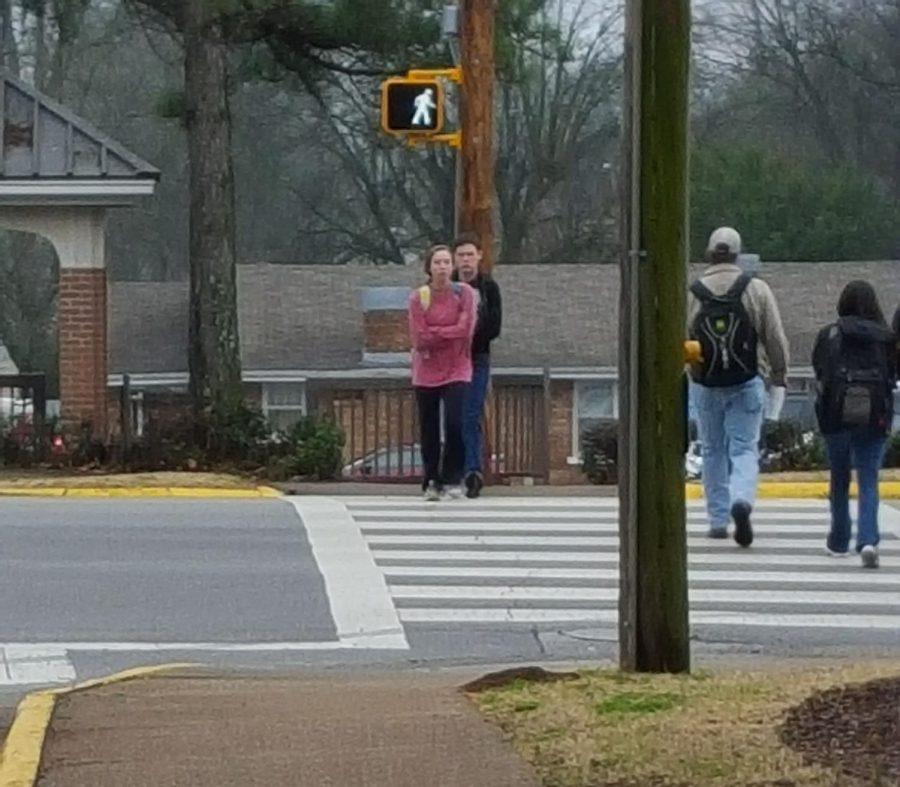UNA adds ‘no turn on red’ to Irvine and Pine streets
February 27, 2016
The City Engineering Department of Florence placed two “no turn on red” signs in early February at the crossing of Pine and Irvine streets.
The City Engineering Department recommended the sign after a driver nearly hit a student while turning right.
“Part of the issue was the drivers being used to the rule of turning right on red,” said UNA Chief of Police Kevin Gillilan. “Coupled with that, the pedestrian relied on the crosswalk to stop traffic.”
He said the City Engineering Department deactivated the lights and installed the signs, warning drivers not to turn right on red in that particular area.
“Drivers are still getting used to those signs,” Gillilan said. “It is kind of taken for granted in Alabama on when you can turn right on red when it is clear. When (drivers) pull up (to the light), they are particularly looking for vehicular traffic and (they) take their eyes off of people crossing.”
Gillilan said he has not received any reports or violations of the new law, but saw a driver break the rule.
“I was in traffic the other day, and the vehicle in front of me was a contractor, I believe,” he said. “They pulled up to the stop light and started to pull out, but caught the sign and stopped rather abruptly.”
He has heard good reviews on the newly placed signs, said Deputy Chief of Police Mark Parker.
“I posted a photo of it on the police department’s Facebook page shortly after they went up and got several compliments,” Parker said. “I think it was appreciated, and people like the idea.”
The sign placement has created another problem rather than a solution, said sophomore Macey Morris.
“I just feel that they will serve as a distraction for drivers,” Morris said. “It gives (drivers) more time to look at their phones to text and sometimes miss the light. I see a lot of those signs around the city, and I do not think they are necessary.”
The rule is inconvenient to some students, said sophomore Will Bryant.
“That’s the way I come every morning, and I’ve never had a problem there,” Bryant said. “So, now it is going to be irrelevant for everyone.”
The rule serves as another way to protect students from harm while crossing, said senior Kahri Bolden.
“I think they have been put there in order to cut down on accidents,” Bolden said. “In addition to keeping pedestrians safe, I think it is necessary.”
He said although they help students use the crosswalks, there are a number of students crossing outside the designated areas.
Gillilan said he is going to continue monitoring the crosswalks and see if there are new ways to make them safer.



![Caleb Crumpton [COURTESY OF UNA SGA]](https://theflorala.com/wp-content/uploads/2024/07/caleb-crumpton-courtesy-of-SGA-425x600.jpg)






